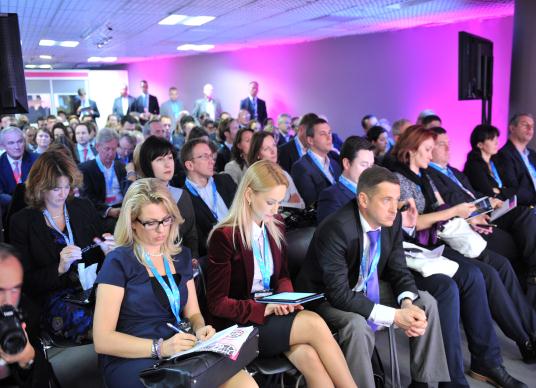
Mapic 2012 attracted over 8,200 unique participants (up 6.2% over 2011), and 2,430 retailers, of whom 400 were new brands including the likes of Calvin Klein Jeans, Costa, Tiffany & Co and Dairy Queen, who were making their first appearance. There were 850 investors and 730 exhibiting companies. The biggest attendance surge came from the US, its delegation of 118 companies representing a 39% increase on 2011.
Particularly surprising this year was the diverse international presence among exhibitors and visitors. Not only did Russia make headlines as country of honour, other emerging countries such as Brazil and Turkey were also present, working hard to represent their healthy retail economies amid an otherwise struggling Europe. Another surprise this year was an impressive increase in American retailers.
“We saw a significant jump in American participation this year, driven by interest from retail brands and investment companies,” said Nathalie Depetro, director Mapic, during the final press conference. Major US names included Howard Hughes, Vornado Realty Trust and Thor Equities, which recently opened a Paris-based office to expand its European business and encourage European retailers to enter the US market.
The magic word at Mapic this year was ‘change’. James Brown, head of EMEA retail research at Jones Lang LaSalle (JLL), was back again this year as a keynote speaker to present the Mapic 2012 wrap-up presentation. Working closely with retail research and consulting colleagues across EMEA, Brown is responsible for providing strategic retail real estate advice to developers, investors, landlords and retailers.
His general message to Mapic participants was surprisingly positive amid global economic woes, citing that “there will no doubt be growth on the horizon for Western Europe over the next two years.” He clearly emphasised the importance of online and e-commerce, saying, “The biggest change in retail is digital.” He suspects that this theme will change the entire way retailers do business in the coming years. Brown didn’t underplay the importance of China, stating that the country is rapidly emerging with the arrival of Chinese brands into the UK and European market.
As Mapic progressed, real estate financial and professional services companies CBRE, Cushman & Wakefield, JLL, BNP Paribas Real Estate and Savills rolled out their latest retail real estate reports. They concluded that strong demand from luxury and fashion brands and a shortage of available premium space in prime centre city locations has seen rents rising in key cities including New York, Hong Kong, London Paris Moscow, Milan and Madrid.
The booming Russian retail market, one of the territories drawing most attention throughout the week, coupled with digital developments and the continued demand for prime, centre city retail locations, were the talking points of Mapic 2012, where representatives from some 70 countries gathered for three days of high-octane business discussions. Russia, the 2012 Mapic country of honour and Europe’s leader in terms of projected retail real estate investment, saw participation rise 28%, with 291 companies.
According to the country’s state statistics service, retail sales in Russia rose 4.4% in September compared to 12 months ago and overall retail sales for the first half of the current year increased 7.3%. “With disposable incomes growing and a growing middle class, Russia is predicted to become Europe’s leading retail market,” said Robert Bronwell, CEO EMEA retail at JLL.
In his packed keynote address, Cushman & Wakefield’s head of retail services in Russia, Maxim Karbasnikoff, said Mapic is all about new retailers. “It’s not about selling Russia, it’s about doing deals.” On what Mapic brought to Russia this year, Karbaskinoff said, “More optimism and the desire to be more professional.” To respond to the reoccurring digital theme throughout the three-day show, he noted, “The shopping centre is the place to meet and be entertained; not only to attract new customers, but to create a dialogue through new technologies.”
Notifications
You must be logged in to post a comment.